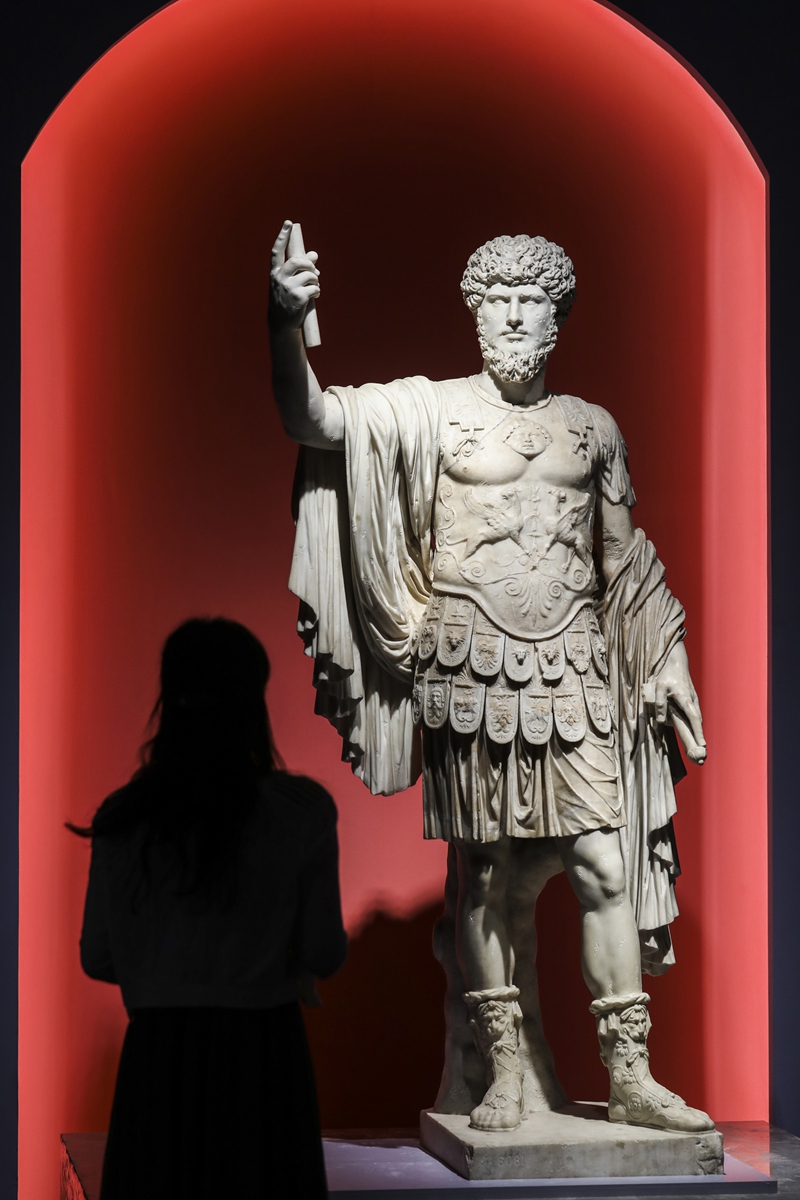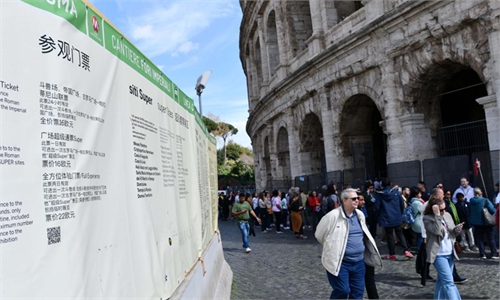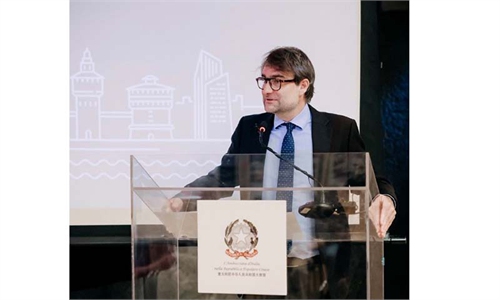ARTS / CULTURE & LEISURE
Ancient Rome exhibition in Beijing highlights China-Italy exchanges
Love and beauty

A visitor looks at a statue of Verus Armeniacus at The Light of Ancient Roman Civilization in Beijing on June 10. Photo: VCG
Featuring rare finds like a second century marble statue depicting the "Leaning" Aphrodite - the Goddess of Love and Beauty - an exhibition of ancient Roman art organized by China and Italy opened on Monday at the Beijing World Art Museum of the China Millennium Monument.
The Light of Ancient Roman Civilization is the second stellar cultural event in the past three months to feature Italy's top-notch cultural legacies in Beijing.
Besides ancient Roman art from the collections at Italy's National Archaeological Museum of Naples (MANN), 50 self-portrait paintings from Florence's Uffizi Gallery collection are also on display at the National Museum of China.
This Italian art in Beijing creates great momentum for China-Italy exchanges in 2023. The Ambassador of Italy to China Massimo Ambrosetti told the Global Times that the two countries' cultural communication has already become a "tradition."
Beyond space and time
A total of 69 Italian works, including sculptures of mythical European figures like Aphrodite and the god of wine Dionysus, are on display at the exhibition hall with the accompaniment of a live performance of Bach's prelude by a violinist.
These artworks that carry the charm of Greco-Roman philosophy were created around the time of first and second centuries, a period of time that was pivotal to the Western art world since it was during this time that its principles and perceptions on aesthetics formed.
Sculptures, Pompeii frescos and mosaics of extreme artistic value are not the only Italian treasures on display at the exhibition. Deceptively modern-looking glass cups and bottles and other everyday objects provide a window to view Europeans' ancient lifestyles.
These relics are only a small portion of the more than 3 million items in the collection at MANN, the first public museum in Western history.
At the time when these artifacts showing Mediterranean civilization were created, the Han Dynasty (206BC-AD220) ruled China.
Mario Grimaldi, the exhibition's Italian curator, said that the Beijing exhibition aims to relate "different but comparable aspects of Roman society" and "compare them with the Chinese one."
The exhibition's guide, MANN's director Paolo Giulierini, told the Global Times that while the show features only Italian relics, he is still able to imagine their counterparts in Chinese civilizations.
"The Roman empire and the Chinese empire are notable in history. When I see men and women depicted in Roman art, I can also feel the men and women in the Chinese context," Giulierini said, adding that the cultures of China and Italy met each other "beyond space and time."
Giulierini also introduced Italy's relic conservation strategy to the Global Times, noting that digital technology has become an essential part of archaeological exhibitions.
Giulierini said that, to provide a better visitor experience, MANN has developed a video game in Chinese that walks visitors through their collections and the museum's history. The game has been played by 2 million Chinese visitors.
Similar to China's creative attempts such as using 3D printing to create exhibits on the Mogao Caves and Yungang Grottoes, Giulierini said that Italy has also used digital technology to restore ancient art.
He said he looks forward to collaborating with China to recreate ancient buildings and sculptures in virtual reality.
"It is only through dialogue that we can break down the barriers that separate us and create a shared sense of humanity," Giulierini noted, adding that he believes museums are "not just a repository of objects," but a "non-political neutral space" to assist cultural exchanges.
Continued tradition
Ambrosetti attended the Beijing exhibition's opening ceremony, during which he said he believes shows like this are not just for "presenting or restoring" works of art, but also for learning about the "civilizations that made the artworks."
In the mid-1990s, he was already familiar with Chinese culture as he studied the art of porcelain in Beijing.
An art lover, Ambrosetti noted that China-Italy cultural exchanges have long been a tradition, with notable figures like Italian voyager Marco Polo, who came to China along the ancient Silk Road, and Matteo Ricci, an Italian missionary who brought Western knowledge about subjects such as geometry and geography to China.
The current exhibition isn't the only event to carry on the tradition of China-Italy cultural exchanges in the contemporary age. Another art exhibition featuring 82 Italian Renaissance artworks was held to celebrate the China-Italy Year of Culture and Tourism in 2006.
This Culture and Tourism Year tradition has been continued for decades.
Addressing China and Italy's shared "bilateral comprehensiveness," Ambrosetti said the cultural partnership between the two countries will continue.



